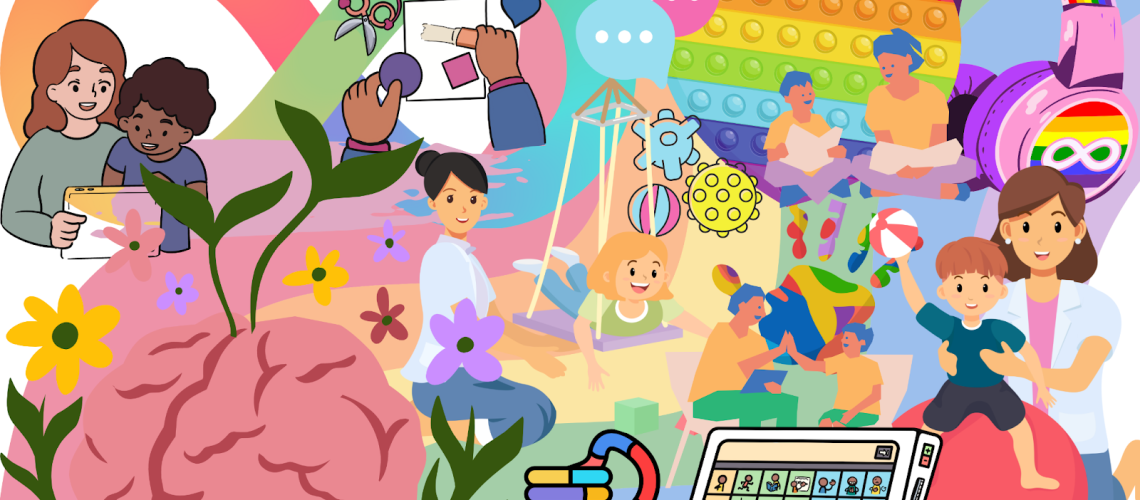Over the last couple of years, you may have heard our therapists talking about practising in a ‘neurodiversity affirming’ way. Since 2022, we at My Therapy Space have been actively working to shift our therapy approaches to be in line with this value, and feel it is incredibly important that we continue to support children and families in this way.
But what does it mean to be neurodiversity affirming, and what does it look like to do therapy this way? Thankfully, while the words are rather big and complex, the principle is actually very simple!
What is Neurodiversity?
The term ‘neurodiversity’ refers to the natural differences that exist in human minds, and all the unique and different ways that people can live, think, act, process, feel and function. It’s a term that refers to everyone on the planet. We see diversity in so many different aspects of human life – like cultures or hair colours. Neurodiversity is just another way that people can be different from one another.
We can use the term ‘neurotypical’ to describe minds that function in the ‘expected’ or ‘usual’ ways. These people have brains that think, feel, act and respond in line with the typical norms of society.
The term ‘neurodivergent’ is used to describe individuals whose minds ‘diverge’ (differ) from the norm. It’s an umbrella term, covering all sorts of different ways a brain could be. These people may think, feel, act or respond differently than those in neurotypical society.
Some of the ways a brain could be neurodivergent include:
| Autism | Brain Injury |
| ADHD | PTSD |
| Dyslexia | Dyspraxia |
| Dyscalculia | Tic Disorders |
| Epilepsy | Down Syndrome, and so many more! |
What does it mean to be Neurodiversity Affirming?
To be ‘neurodiversity affirming’ is to recognise that no one ‘neurotype’ (or type of brain) is better or worse than another. It recognises that each neurotype has its own strengths and challenges, along with unique characteristics or traits. It sees the differences in how we think, feel and act as valuable to our society.
During their lives, neurodivergent people are often told that they need to change to be more like neurotypical people. This can be really hard on their confidence and mental health. By shifting into a ‘neurodiversity affirming’ way of thinking – recognising neurodiversity as a normal, natural part of human variation, we move away from the idea that there is a right or wrong way to be, and instead look to support and include everybody.
What does Neurodiversity Affirming Therapy look like?
Here at My Therapy Space, we work with a lot of children who have some sort of diagnosis or disability. We also work with children who are delayed in their development and need some support to catch up. We believe in supporting the development of all children through the use of child-led, play-based, strengths-focused, and relationship-based therapy. We see all children as capable of incredible things, and worthy of the time, energy and effort needed to support them to get there.
Neurodiversity affirming therapy recognises that there may be a difference between how a person does things and the requirements of the environments or society around them. Then, instead of telling the neurodivergent person that they need to change to better fit in, the therapist seeks to reduce the barriers that might hold that person back – this may include skill building, accommodations or adaptations, or providing education. Neurodiversity affirming therapy says “let’s figure out how to support you and your brain, so you can be your best, most authentic self”. We want to help children build the skills they want and need to be their best selves in this world. This is the kind of therapy we are committed to here at MTS.
Do you have questions, comments, want more information on anything? Let us know!

